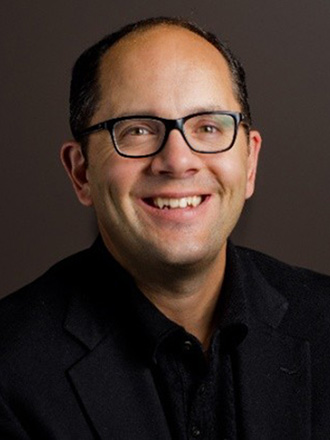As challenger brands compete with established global brands in a wide range of categories including drinks, snacks and cosmetics, how can existing companies harness their own creativity and entrepreneurship to create successful innovative brands?

We talk to Paul Earle, Principal, Earle & Company, and adjunct professor at Northwestern University’s Kellogg School of Management US, who spent a year profiling 12 founders of the most revolutionary and successful companies in the US, to discover the secret to their success and how large companies can emulate their performance.
Earle interviewed the founders of companies such as Peloton (home fitness), Halo Top, which has grown within five years to become America’s number one pint-form ice cream and Harry’s (men’s grooming).
Earle also talked to the CEO of Hello, the fastest-growing oral care brand in the US, which is now carried in nearly 50,000 stores nationwide following humble beginnings eight years ago and Hippeas, a chickpea-based snack which was piloted two years ago and is now sold in 50,000 locations in two continents.
What do these breakthrough brands have in common, and what are the most important characteristics of a successful, innovative new offering?
According to Earle, the five markers of disruptive innovation are:
- The innovation must be radically and meaningfully differentiated, not just marginally or incrementally different.
- These new brands are built and designed around small experiments that enable the marketer to test and learn and adapt depending on what consumers tell them.
- They feature big new ideas about how to deliver the product to the consumer including direct to consumer or third party retail. This means a fluid, dynamic system, not a standard product jammed through retail in the traditional way.
- They are purposeful and stand for something. They are brands that people join, not just buy, they are movements and represent attractive values, beliefs and systems.
- They are quirky, strange and anomalous in some way. It could be as simple as a tone of voice, a product feature or flavour or a packaging or design aesthetic, but they are all slightly weird.
Weird is good
So what is the importance of weird and how to go about identifying it?
Earle comments “We are trained as children to think that weird is bad and needs to be corrected whereas the magic rests in the unusual and that applies to both people and brands.” He adds that this will be the next area of study where he and his colleagues will be soliciting submissions for things that people find really weird and awesome (http://www.zonkeyproject.com) and they will then try to make sense of all the submissions and publish the findings.
He underlines the importance for creativity of having a diverse team working on the project.
“I mean diverse in every way, not just culturally but also a diverse set of backgrounds because creativity is all about connecting the dots. There are no new ideas, just new combinations of existing ideas, so you need as many dots and as many kinds of dots as possible to get new combinations that are magical and wonderful.”
Should big corporates be afraid?
Looking at the range of categories, Earle studied (footware, home training, men’s grooming, ice-cream, beverages, meat substitute, vitamins, snacks, toothpaste) it seems as if the new brands were entering already crowded segments. Does this mean that no existing corporate brand is safe?
Earle observes that innovation can come anytime. “I think any big legacy incumbent has to constantly reinvent itself because these days there are groups of very capable entrepreneurs who will be trying to figure out how they can steal share from the legacy business.
“A great example is Sir Kensington, a line of premium craft condiments, which went right after Heinz Ketchup. That premise would have been laughable 15 years ago. Now the mindset of entrepreneurs is right let’s try it, so the big brands should always be thinking about what they need to do to stay ahead.
“If I were running a large incumbent brand I would ask myself every morning ‘How can I fend off the outsiders today?’ And the answer is they need to be creating their own disruptive ideas. They should be thinking about how to disrupt themselves and that’s your innovation pipeline.”
According to Earle, legacy companies want to innovate but their business models, infrastructure and systems won’t allow it. Does this mean that existing companies can only introduce incremental change rather than radical innovation?
“I don’t think it is either or; big companies need to constantly update and improve their businesses incrementally and they should also have separate work streams charged with innovation and creating, that imagine more breakthrough offerings. Often they should be separate teams in different parts of the company. You need to have a scout team constantly working on big, risky new ideas, and to physically separate it from the core business so they are not encumbered by the lengthy approval processes and other things that big companies do to mitigate risk.“
According to Earle’s book, A front row seat at the revolution, a kick-off team can often comprise just a few people. He comments “I think the optimal team size for formation and launch is three to five people and you can get a business commercialised and cruising at that size. Of course there will be people at the plant to do the operational things and once it takes off, you need more people to scale up.”
The outsiders
Earle mentions productive naiveté and being able to think out of the box as being a common factor. For instance, only three of the people he interviewed had previous expertise in the category of their product. The founder of Halo Top was a disaffected lawyer who had tried his hand at acting and standup comedy. The founder of the Allbirds sneaker described by Time magazine as the “world’s most comfortable shoe” was a former professional soccer star.
How were they so successful if they lacked the experience and knowledge of big brands? Earle comments “I know many entrepreneurs who say that if they had had any expertise in the category or done too much traditional research, the only conclusion would have been to not enter and yet they did and created a lot of value. So rules are good for a civil society but not for innovation.”
How can existing companies go beyond their current thinking?
Earle responds “I advise my clients to write down the orthodoxies and unwritten rules of their space and deeply question them. They will find that what they often think are rules, aren’t and that’s why outsiders are so potent; they either ignore the rules of the category or don’t know about them.”
So should existing companies either question or disregard research if they want to be innovative? “I would say make your radar more sensitive to adherence to rules that may not be actual rules. Because consumers know them too, they are conditioned for instance not to expect black toothpaste because for generations, marketers avoided doing that because black might connote unhealthy teeth but that could be really arresting and signal modernity or coolness. So both consumers and marketers are conditioned to expect certain things in the category. Consumers learn to play back exactly what the marketer is saying so you have to look for an opportunity to break that cycle and violate rules.”
Part 2 of this interview will be published tomorrow, 29 October ( ed.)


